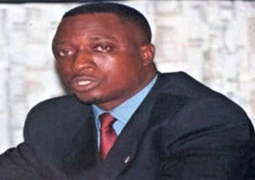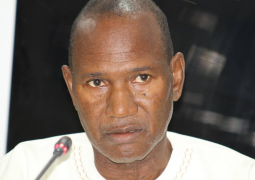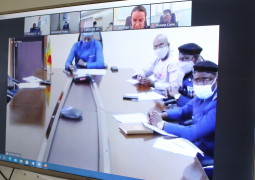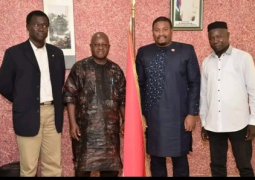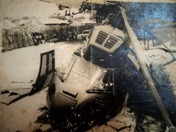
This resulted in the death of former vice president of The Gambia, Mr. A.B. Njie and few others.
Others that survived the crash included the late President’s Press Secretary, Jay Saidy, the Secretary General Professor Jabez Langley, Journalist Sulayman Njie (Saul Njie) and the pilot. But Sir Dawda Jawara’s close friend and confidant A.B. Njie, who was the former vice president and Foreign Affairs Minister at the time died on the spot.
Its worth knowing that most of these occupants of the helicopter, according to The Gambia News Bulleting issue of Friday 23rd April 1982, “suffered minor injuries were flown to Dakar immediately while the rest, including the President, went to Bansang Hospital, then to the Royal Victoria Teaching Hospital in Banjul” for treatment.
The day of the incident was described as a “very sad day” by Gambians because the late president just survived a coup seven months earlier before the helicopter crash which was the reason he used the helicopter during his election campaign in the year under review.
According to gathered facts, the former president was advised by the Senegalese security (soldiers) guarding him at the time to travel by air for security purpose taking into consideration his safety after the coup.
“To ensure his safety, the Senegalese army guarding him at that time thought it was unsafe for him to travel by land or in a car to do his campaign and therefore advised him to travel by helicopter as the Senegalese intelligence thought Kukoi Samba’s rebels might still be hiding in the bushes to strike or attack him,” historian Hassoum Ceesay explained.
The crashed helicopter was a borrowed one to the Gambia government then by the former President Abdou Diouf of Senegal “but the helicopter was completely destroyed.”
According to investigation, it was revealed that the crash was due to human error and when it crashed, one of the blades fell off “while the pilot was commended because when the blade fell off, the pilot ran the chopper into a tree to minimise the impact. According to investigation, if he hadn’t done that nobody would have survived the crash, because the chopper would have exploded if crash landed on ground direct” historian Ceesay narrated.
According to the Bulletin, “the helicopter crash-landed between two ancient ‘taboo’ trees on the fence of a compound at the Bantaba of Brikamanding, a village one kilometer from Brikama Ba. It lay in a mess of broken parts, sticks and wires. The door of the cockpit had flung open revealing the smashed dark interior. The main door too was ripped off hinges showing the damage to the passenger compartment. Three fence posts had pierced the underbelly of the helicopter, with one piercing the roof of the chopper.”


